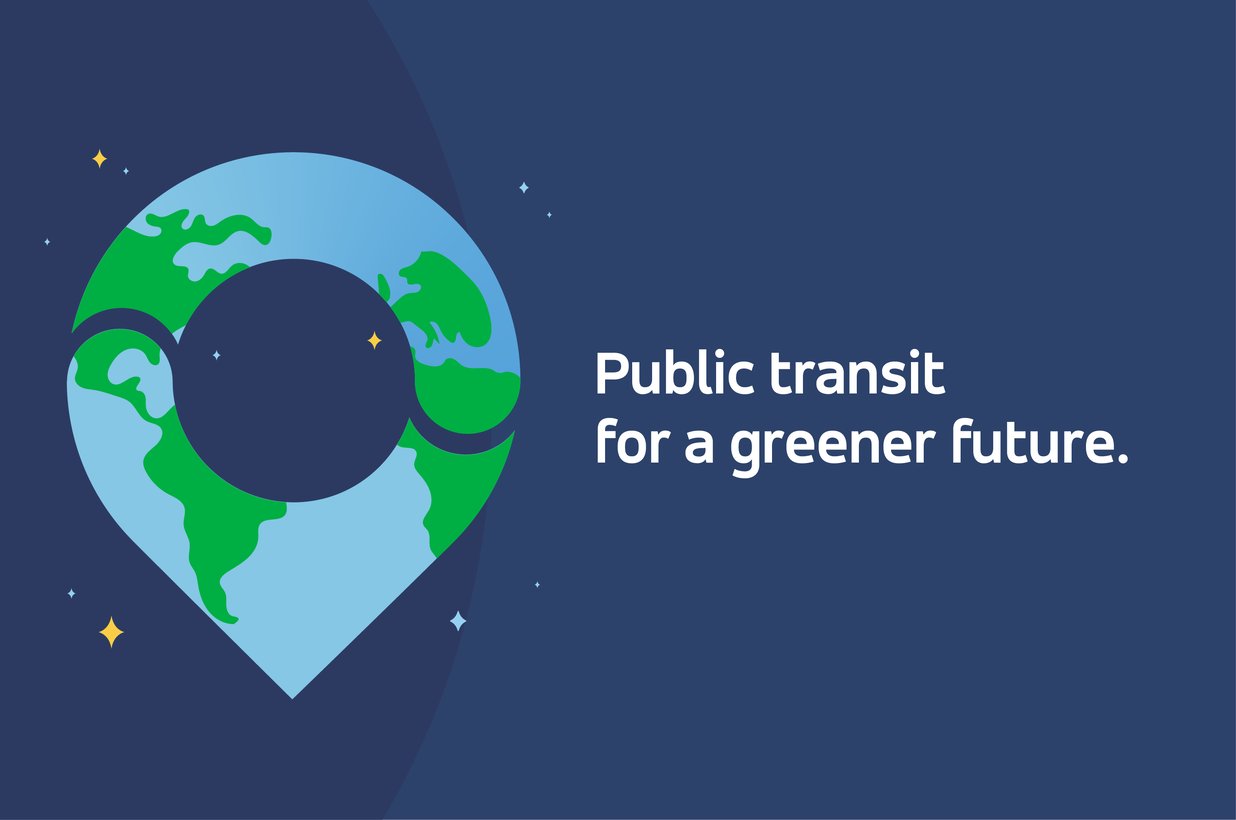An unintended effect of social distancing has been its clear and positive impact on the environment. One 2020 study indicates our efforts to slow the spread of COVID-19 have also improved air quality across the world, lowered greenhouse gas (GHG) emissions, and brought overall pollution levels down.
But can it last? How do we maintain this positive momentum as more people go back to work and return to their regularly scheduled programming — this time, outside of the home? We analyzed public, open-sourced data and crunched our own internal numbers to understand more about COVID-19’s influence on transit trends and on the environment, and offer ways to maintain the momentum.
It all starts with our commute.
In 2020, the United States saw an 11% decrease in energy-related CO2 emissions compared to the previous year. Transportation, in particular, is the leading source of GHG emissions in the US — accounting for 29% of all emissions in 2019, according to the US Environmental Protection Agency. In 2020, emissions from transportation dropped 14.7%.
The transportation sector alone saw a 273 million metric ton drop in GHG emissions between 2019 and 2020 — a difference far greater than that seen from 2018-2019.
Part of this reduction in overall transportation-related emissions was due to a reduction in miles traveled in private vehicles. A 2020 study by the US Department of Transportation found that average passenger vehicle miles traveled were down 13% compared to the same period in 2019.
The environmental benefits of staying at home are clear but, as restrictions are lifted, communities are buzzing once again. Read: The cars are back. All of the progress made when it comes to reducing carbon emissions could vanish quickly. However, there are attractive alternatives to driving a private vehicle — ones that combine the convenience and flexibility of personal driving with the affordability, efficiency, and sustainability of public transit.
Via works with partners across the globe to bring these innovative public transit networks to life. By applying our tech-enabled transit solutions, our partners — from rural towns to some of the largest cities in the world — increase network efficiency, reduce traffic congestion and carbon emissions, while also improving quality of life for their communities.
Solution 1: Close transit gaps in underserved communities.
Jersey City, NJ, is home to nearly 17,000 households living below the poverty line. These low-income residents are more dependent on transit than their higher-income counterparts, but also primarily reside in the North and South regions of the city, where they lack access to Downtown transit stations. Via Jersey City offers these communities first-and-last mile rides to Jersey City's existing transit hubs, shopping centers, and business districts. A 2020 user experience research showed 41% of riders use the new public transit service as a direct replacement for their private vehicles.

Between April 1 2020 and April 1 2021, 18% of the 250,000 riders completed rides whose origin and/or destination was within 330 feet of any of the stations shown above.
And the service has only grown in popularity, with a 78% increase in ridership within eight months since its February 2020 launch. Today, ridership is more than triple what it was before the onset of COVID-19, currently hitting 1,600 rides per day — 70% of which are safely shared by multiple passengers. And because of Via’s technology platform, there aren’t empty vehicles circling the city: Operators are able to adjust the fleet size based on real-time rider demand. Mark that as another win for the planet.
Solution 2: Expand access and unlock opportunity across an entire city with TransitTech.
For a long time, Arlington, Texas, was the largest US city without a public transportation system. In 2017, Via partnered with the City of Arlington to replace its single-route bus with a microtransit service that now covers the entire city of 400,000
residents, providing affordable and reliable transportation throughout the community. Riders book trips using a localized app or by phone, and can pay with a credit, debit, or prepaid card.
The Via-powered transit service zone encompasses 65% of the total jobs in the city, and mobility has increased for the residents, many of whom no longer need a private vehicle. From its transit-averse roots, Arlington has emerged as the first city to run solely on microtransit, delivering over 553,500 rides with an approval rating of over 97% since launch.
Solution 3: Replace under-performing fixed routes with on-demand transit.
A recent report finds that US transit ridership is down 53%
compared to pre-pandemic levels. The falling ridership set off alarm bells for communities and COVID-19 could certainly accelerate this decline. There’s no question that underperforming routes need to be optimized with new approaches.
And this problem isn’t limited to the States. To combat a 90% drop in ridership during the pandemic, transportation leaders in the town of Sevenoaks in the United Kingdom implemented Via’s technology and launched a new on-demand transit service using their fixed route buses. In just one month, the on-demand service,
called Go2, increased vehicle utilization by 77%, with a more than 60%
reduction in driver hours on the road. Meanwhile, passengers’ average wait times for the on-demand bus decreased from almost 50 minutes to just 11 minutes.
Over 70% of survey respondents said Go2 reduced their private vehicle use. And 22% of respondents had not used Sevenoaks’s fixed route buses before the on-demand service launched.
The positive impact COVID-19 has brought to the environment has certainly captured people's attention, but it shouldn’t take a pandemic for us to breathe clean air; this should be the air we breathe every day. Turning this temporary improvement into lasting changes is our goal. At Via, we are reimagining the way the world moves by providing technology that makes public transportation smarter, greener, and more efficient.





